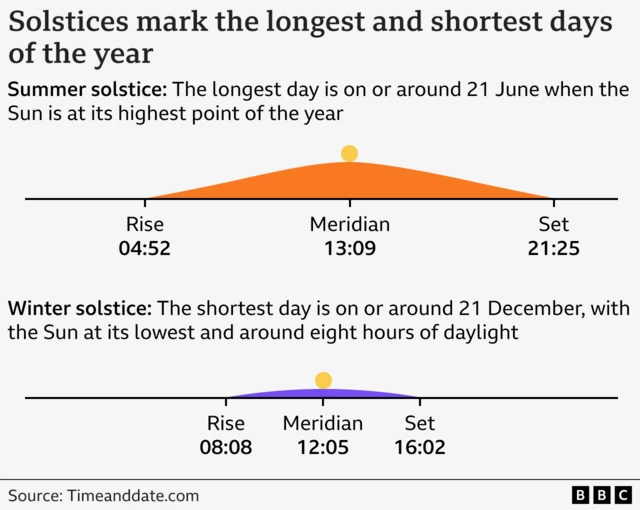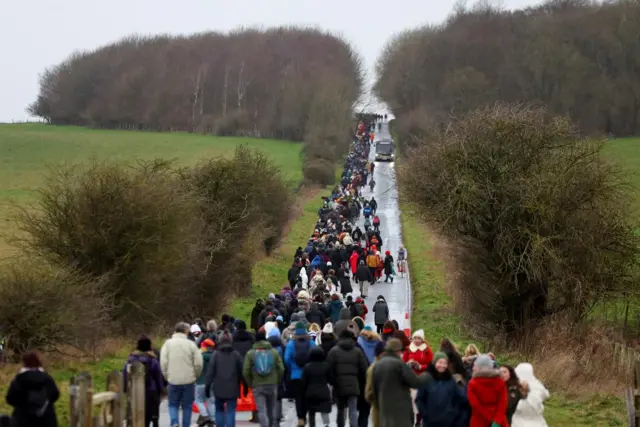The sun will soon set on parts of the UK - and our live coveragepublished at 14:55 GMT 21 December 2024
 Imogen James
Imogen James
Live reporter
It might be the shortest day of the year, but boy did we pack a lot into it. Today, we saw people gather across the UK to celebrate the winter solstice.
Hundreds headed to Stonehenge in Wiltshire to welcome in day break. Our livestream captured heart-warming moments, from a group of friends who have written their own song about the solstice, to an eight-year-old who got lost on the way to Stonehenge with her dad.
In Ireland, similar celebrations happened at the prehistoric monument of Newgrange, where attendees selected by a lottery were able to enter the Stone Age structure.
And we spared a thought for people in Shetland, who saw the latest sunrise and will face the earliest sunset at just 14:56 GMT.
Some people (like us in the London newsroom, a windowless basement) saw no sun at all - but I enjoyed watching the stream of people enjoying the day.
As we now face the longest night of the year, we step closer to spring and longer days - finally.
If you've enjoyed our coverage, we have more to read about the history of the winter solstice and the traditions of Stonehenge.
This page was written by me and edited by Jenna Moon.
Thanks for joining us.
 Image source, EPA
Image source, EPA
















